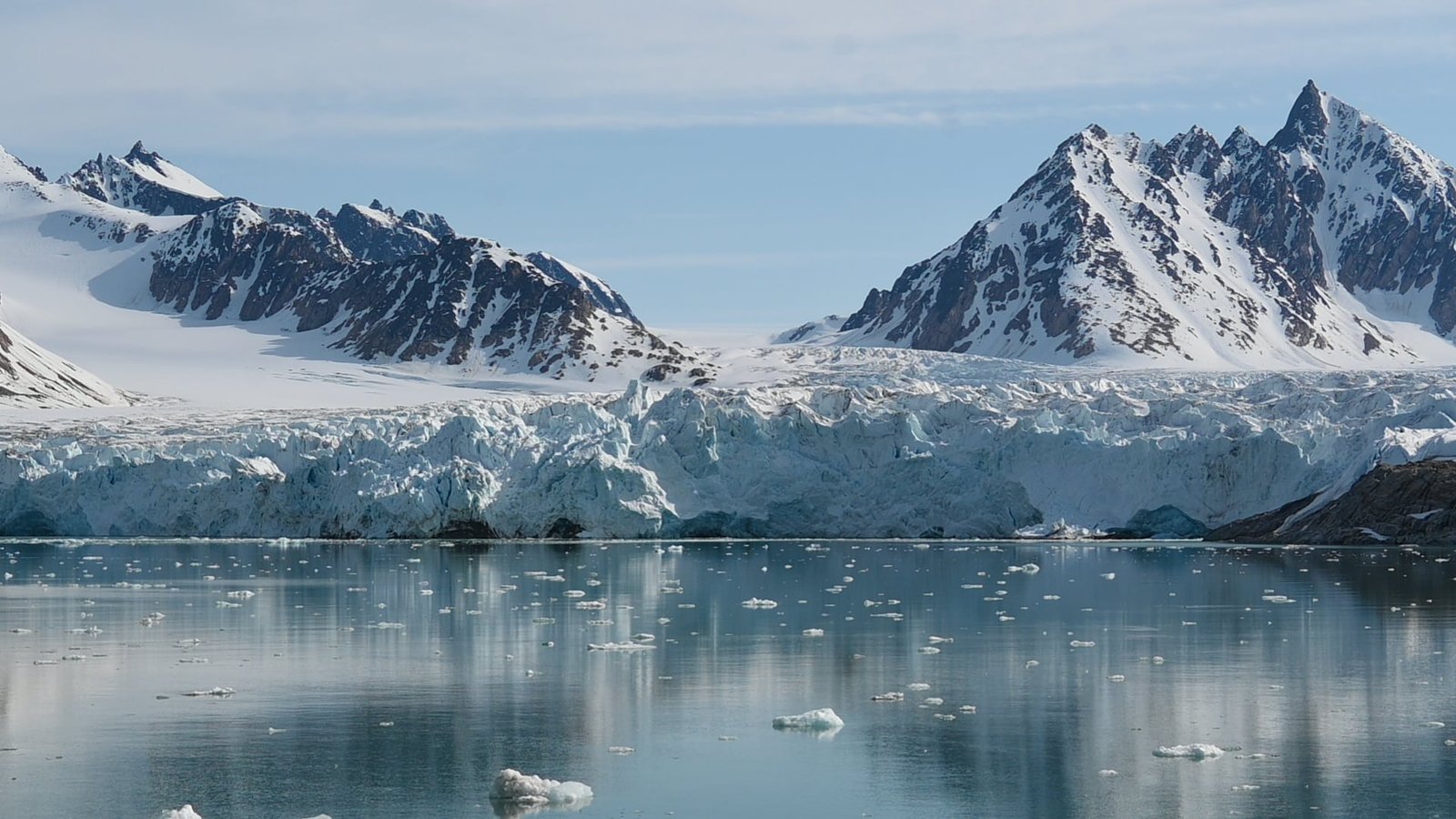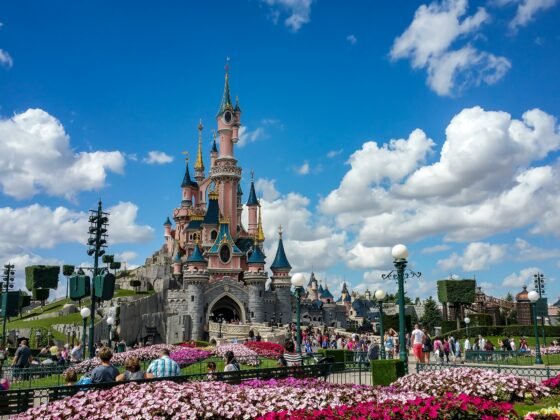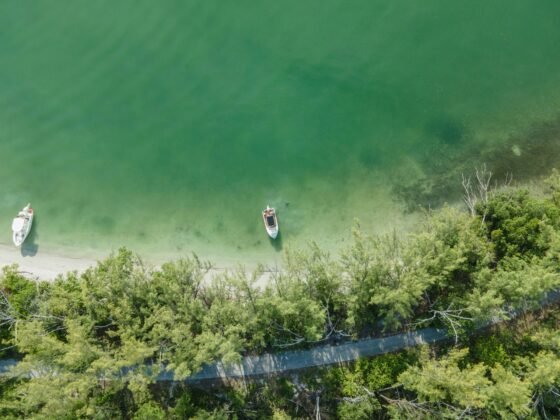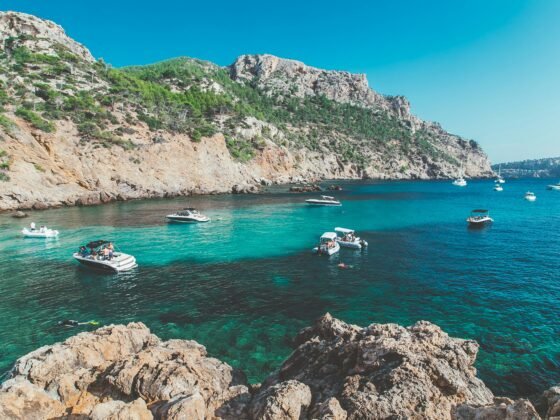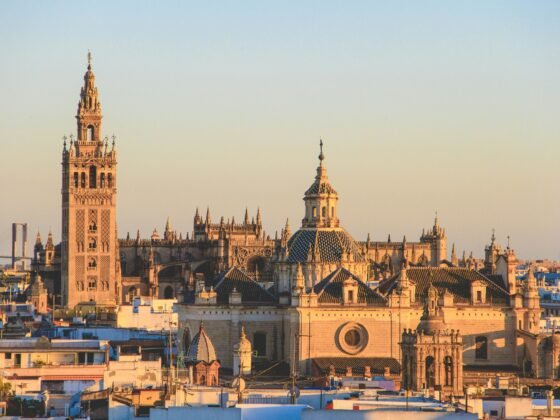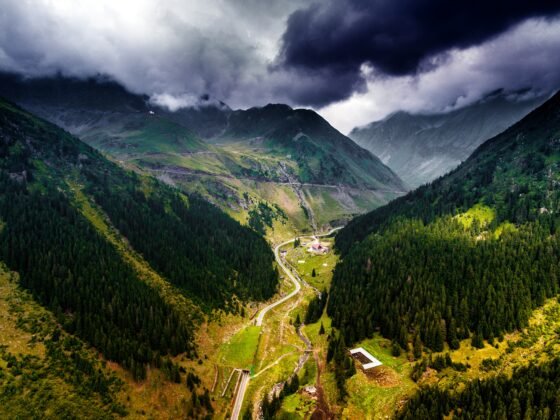Svalbard is a remarkable destination. The scale, remoteness, and beauty of this epic Arctic landscape hits you the moment you arrive. Known for its mighty glaciers and endless hours of summer daylight, it has also become a bucket-list experience for travellers seeking Arctic wildlife, including polar bears, walrus, whales, Arctic foxes, and reindeer.
Some visitors hope to tick off the “Arctic Big Five” during their trip, but how many of these elusive species can you realistically expect to see on a Svalbard wildlife cruise?
I recently spent five nights exploring the archipelago at the end of June during peak midnight sun season, and set out to discover just how wild Svalbard really is. From noisy walrus colonies to graceful minke whales surfacing in glassy fjords, here’s what I learned about Svalbard’s wildlife, along with tips for the best time to visit.
What Are the Arctic Big Five?
Although there isn’t an official list, the Arctic Big Five is generally considered to be:
- Polar bear
- Walrus
- Narwhal
- Beluga whale
- Muskox
If you’re heading to Svalbard with this list in mind, you may be surprised, and a little disappointed, to learn that muskox are not found here. They were introduced in the 1920s as a potential food source, but the last individuals died out in the 1970s. (If you’re keen to see muskox, they can be spotted in mainland Norway at Dovrefjell National Park.)
Narwhal sightings, while possible, are extremely rare around Svalbard. The best-known location to see narwhals is Baffin Island, Canada.
To make things more realistic, let’s tinker with the list to create a “Svalbard Big Five” – species that you have a good chance of seeing on a wildlife cruise.
What Is the Svalbard Big Five?
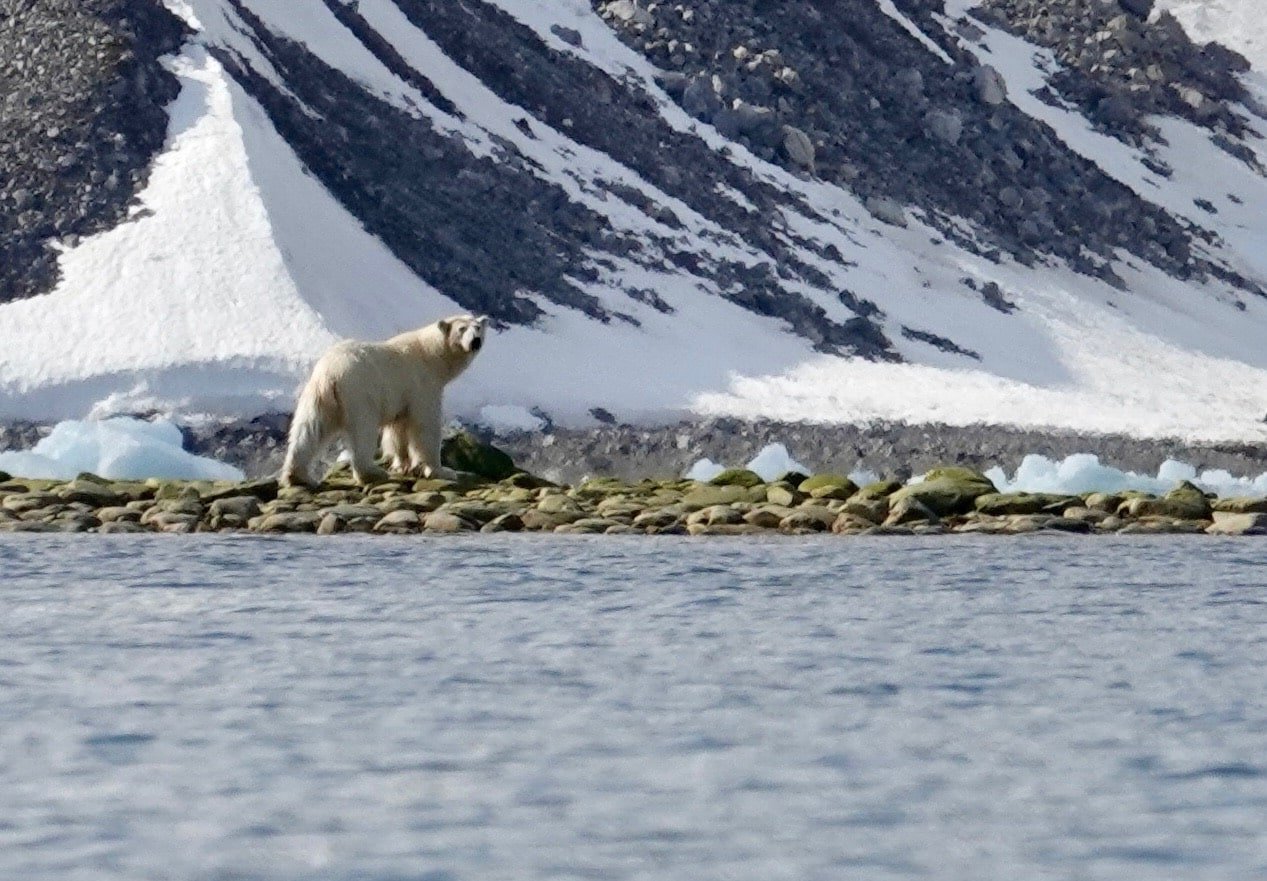
1. Polar Bear – The King of the Arctic
Seeing a polar bear in the wild is one of the world’s most sought-after wildlife experiences. There are around 3,000 polar bears across Svalbard and the Barents Sea region and about 10% of these roam the Svalbard islands themselves.
While Indigenous communities in parts of the Arctic still hunt polar bears for food and clothing, polar bears in Svalbard received official protection in 1972, and the species has been recovering here ever since.
However, climate change remains a threat to their survival. With sea ice retreating earlier each year, their hunting grounds are shrinking. It was sobering to see firsthand the impact of climate change on this delicate ecosystem, something reinforced during visits to the Longyearbyen and Ny-Ålesund Museums, where archival films/images show how dramatically sea ice conditions have changed over the decades.
On the north-west coast, where most summer cruises operate, the pack ice has often retreated by May, meaning you are unlikely to see polar bears on ice unless you are circumnavigating Svalbard or heading to the remote east coast. You will, however, see towering icebergs and calving glaciers deep in the fjords.
While I never saw a polar bear on the ice, I was lucky enough to see three different bears. One morning, a mother and cub were spotted on the foreshore at Magdalenefjorden during breakfast, and, later that day, they reappeared in front of our Zodiac. Another bear drifted past the ship under the midnight sun, giving us a magical, extended sighting.
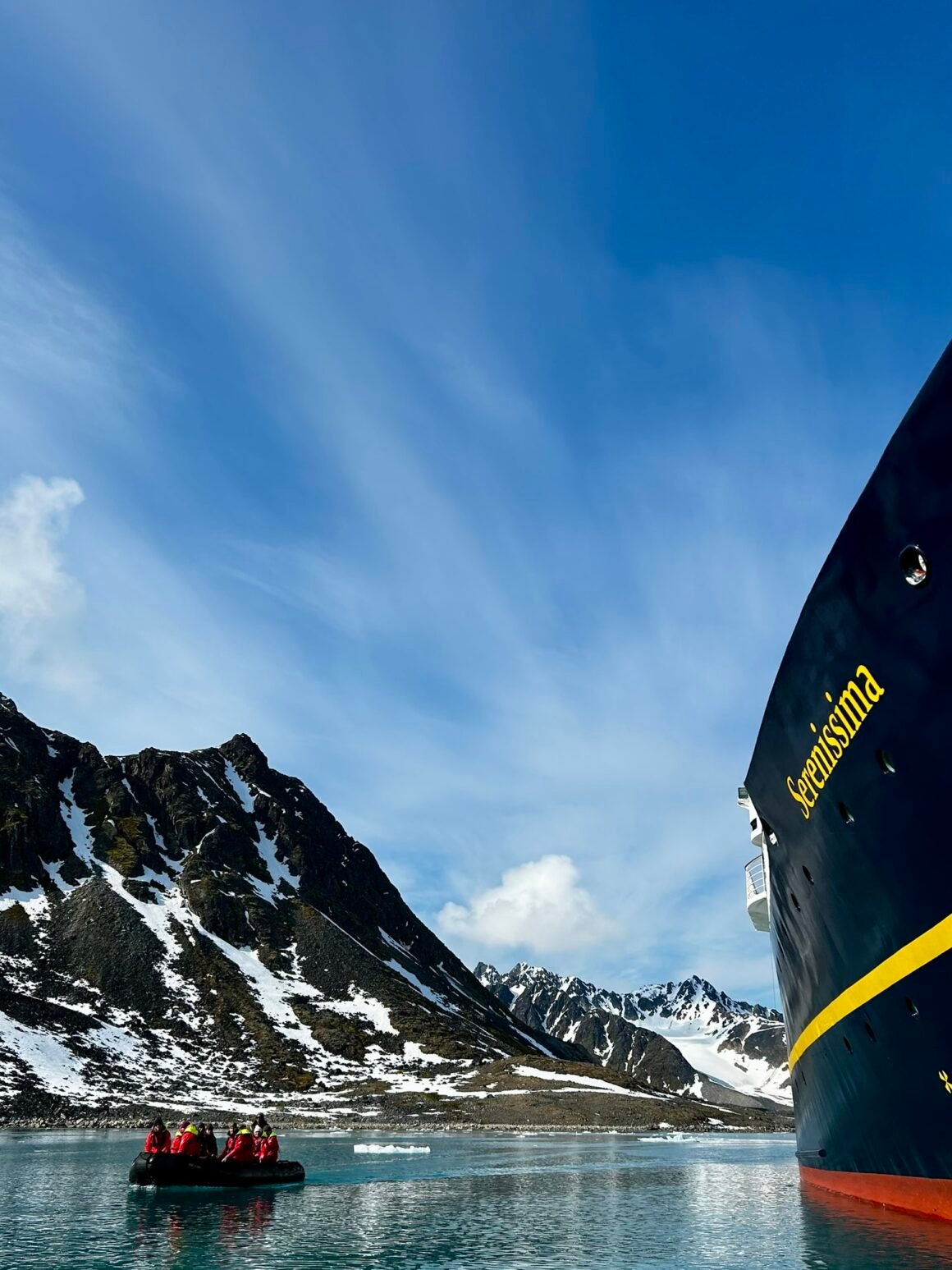
New regulations require people to keep a minimum distance of 500m (reducing to 300m from 1 July) from bears, and actively following them is prohibited. These rules protect both bears and humans, especially when cubs – born in December – are still young and vulnerable.
2. Walrus – Are They Easy to See in Svalbard?
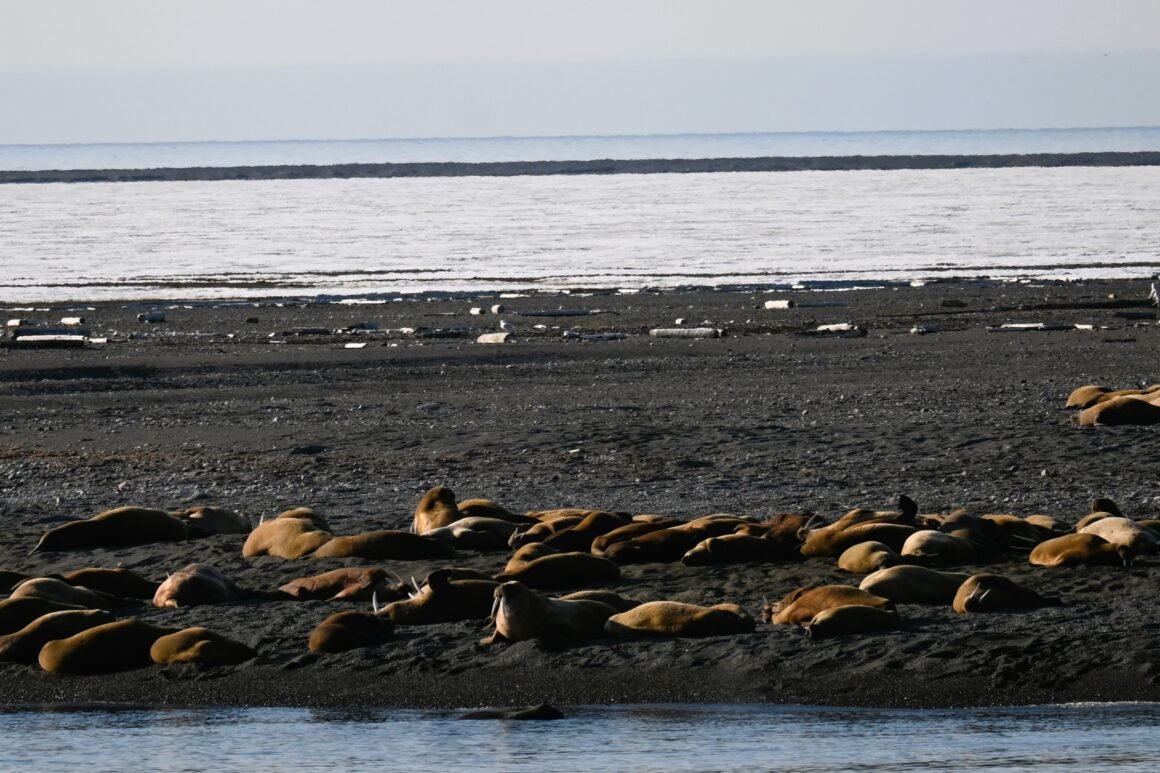
Walrus encounters were another highlight of the trip. The largest group we saw was just after crossing 80° North at Moffen Island – a pancake-flat island in the middle of nowhere, home to a huge haul-out of walrus, basking on the sand with tusks gleaming in the midnight sun.
Walrus also popped up in several fjords, often swimming right past the ship. If you want the best chance of seeing them, be out on deck as much as possible. (Our Swiss guide, Stéphane, liked to say: “There’s no wildlife in your cabin!”)
Hunted nearly to extinction for their ivory and blubber (up to 20cm thick), walrus have rebounded strongly since protection in 1952. Watching them interact is humbling – they are surprisingly graceful swimmers, despite their bulk of up to 1,500kg.
3. Whales – Which Species Can You Spot?
While narwhals are almost never seen in Svalbard, minke whales are regular visitors, their sleek backs breaking the surface in glassy fjords. Other species include belugas, blue whales, fin whales, and humpbacks, depending on the season.
Whale sightings here are often opportunistic. Part of the magic is never knowing what might appear alongside your ship.
Guides also speak of Svalbard’s whaling history, which began in the 1600s with British and Dutch whalers targeting walrus and bowhead whales (Greenland right whales). These were once so abundant that whalers claimed you could “use them as stepping stones” across fjords. By the mid-1800s, the population had been decimated, and hunting shifted to fur-trapping on land by Norwegians and Russians.
While it’s sobering to reflect on this history, we were fortunate to see minke whales on three of our five days, including a shore-based sighting at Bockfjorden.
4. Svalbard Reindeer – A Conservation Success
If there’s one species you’re guaranteed to see, it’s the Svalbard reindeer. These compact, stocky reindeer are unique to the archipelago, and you don’t have to travel far since they’re often grazing in and around Longyearbyen.
Once heavily hunted, they have been protected since 1925. Hunting is allowed but only in season with a license. Today, there are over 20,000 reindeer across Svalbard.
We even saw biologists in the field, collecting reindeer droppings for research. Findings can reveal insights into their diet, which in turn can be linked to the environment they inhabit and how it’s changing due to climate change.
5. Arctic Fox – The Next Species to Protect?
The Arctic fox is perfectly adapted to the polar climate, with a thick white coat in winter and mottled brown fur in summer. We spotted one scuttling away near Ny-Ålesund while listening to the guide talking about Roald Amundsen’s airship expeditions of 1926.
Although not endangered, Arctic foxes face new challenges, including skin lice, which causes fur loss – a serious issue in freezing conditions. They are still hunted in season, but conservationists believe they may soon need special protection, just like polar bears and walrus.
What Other Wildlife Can You See in Svalbard?
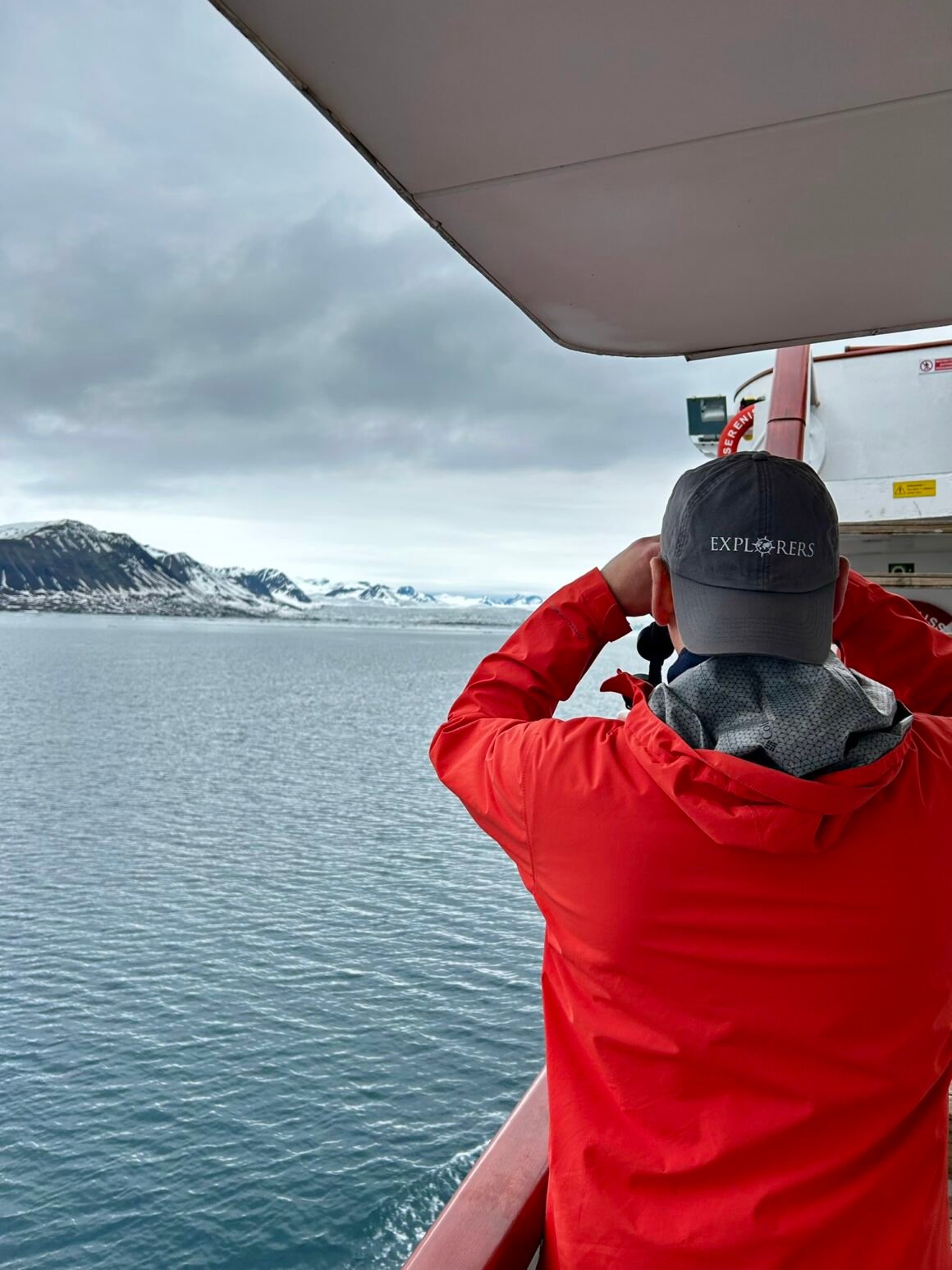
The Arctic landscape may seem vast and barren at first glance, but once you tune your eyes and ears, life is everywhere.
Tips for spotting wildlife:
- Listen carefully: Birds like puffins, kittiwakes, Arctic terns, guillemots, and skuas will often alert you to action.
- Watch the water: Look for ripples, blows, or shapes that could signal a whale, walrus, or even a swimming bear.
- Scan the horizon: Tracks in snow or sand can lead your eyes to movement.
- Use binoculars: Essential for spotting wildlife at a distance.
- Be on deck as much as possible: Bring warm layers, hats, gloves, and sunglasses – wind chill can be brutal, and the UV from ice and water is intense.
- Ask questions: Guides know what to look for – and where.
The combination of 24-hour daylight and a rich variety of species means every moment on deck can bring a surprise.
When Is the Best Time to Visit Svalbard for Wildlife?
- May–September is prime wildlife season, with 24-hour daylight for much of that time and accessible fjords.
- June–August offers nesting birds, walrus haul-outs, and polar bears hunting on retreating ice.
- Late August–September brings vivid tundra colours and whales feeding before migration.
- If you want sunrises and sunsets, visit September–October or March–May, when the days are shorter and the sky can turn wondrous colours.
How Is Svalbard Protecting Its Wildlife?
Svalbard’s wildlife has rebounded thanks to early conservation measures:
- Reindeer protected since 1925.
- Walrus protected since 1952.
- Polar bears protected since 1972 (with new 2025 regulations on approach distances).
Today, 65% of Svalbard’s land and 86.5% of its waters are protected as national parks, nature reserves, and bird sanctuaries, many designated as Ramsar sites.
Strict guidelines govern tourism:
- Designated landing sites.
- Ship occupancy limits (max. 200 passengers).
- Drone bans to prevent disturbance.
Despite these efforts, Norway’s whaling policy is controversial – they resumed commercial whaling of minke whales in 1993, despite the 1986 global ban. This is hard to reconcile when you’re in Svalbard hoping to see these majestic creatures.
Final Thoughts
If you’re planning a trip to Svalbard, go with an open mind, plenty of layers, and patience. The wildlife here is wild and unpredictable, and that’s part of the magic.
It’s less about ticking off a checklist and more about feeling immersed in one of the last truly wild places on Earth.
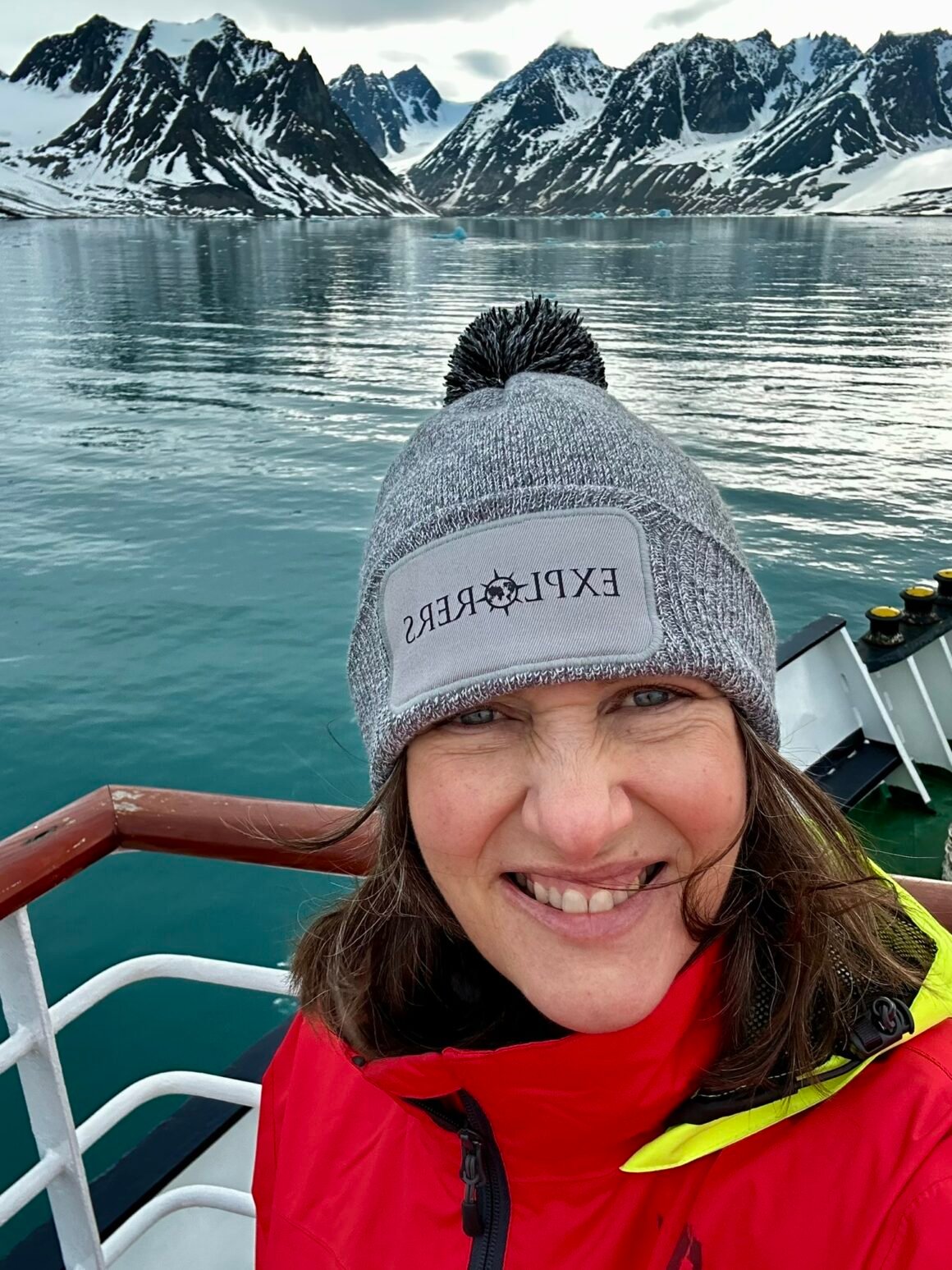
Sara travelled with Hurtigruten Svalbard on MS Serenissima, staying one night at the Funken Lodge, Longyearbyen and 4 nights on board in a standard double cabin.

